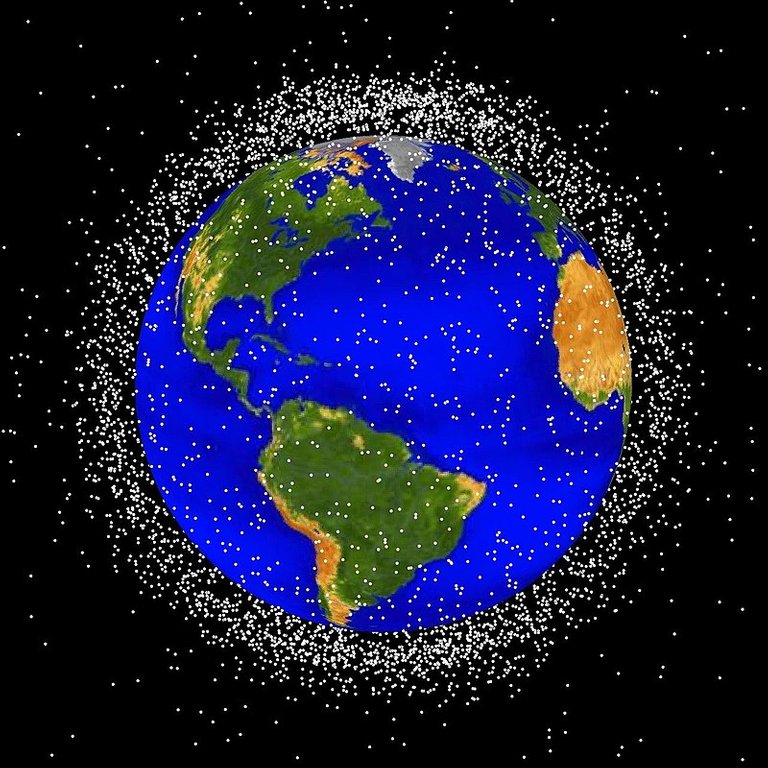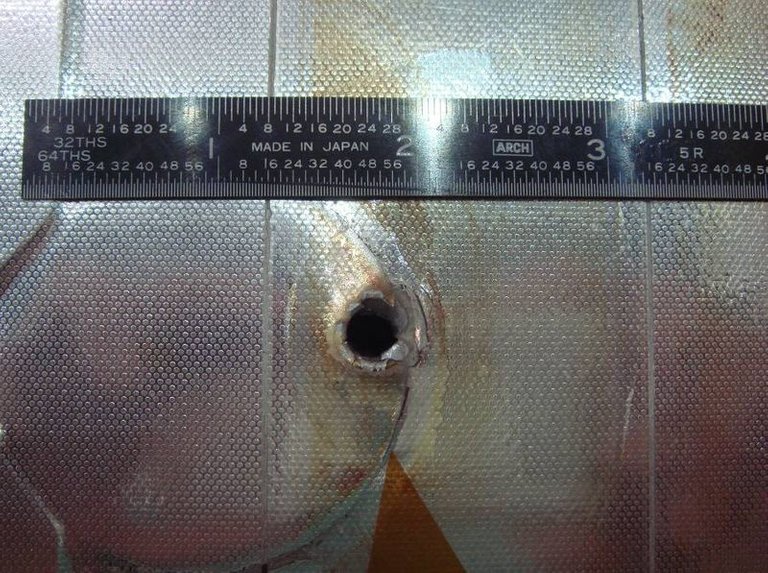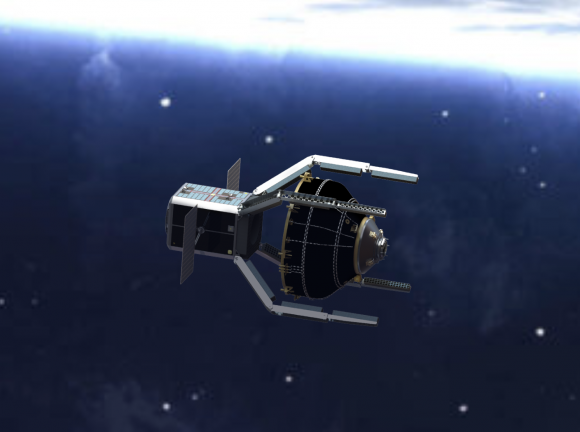Can space debris be cleaned up?
If you have seen any movie related to the launch of a rocket into space, which is based on real facts and not pure fiction, as apollo 13 for example, you may have noticed that when a ship is launched into space the rocket is separated into stages, On the other hand, every year hundreds of new satellites are launched into the orbit of the earth, and also many of those that have already fulfilled their useful life or stopped working are just abandoned and left floating in orbit. These objects that no longer serve a function are called space debris. But this term also includes any object of smaller size, among which can be found: debris from launches, such as flaking of the spacecraft's paint, detachment of protective panels, remains of unburned solid fuel, as well as debris from collisions between spacecraft, such as fragments, screws, pieces of glass and solidified liquids.

Space debris located in Earth orbit. Source: Wikipedia.com.
All this debris represents a serious problem, because although space exploration has brought great benefits to humanity and the thousands of satellites orbiting the earth today fulfill important functions in communication and surveillance, tomorrow it could turn the space near the earth into a real garbage dump, in addition to the potential danger they represent for any other ship leaving or orbiting the earth since we must take into account that these travel at high speed, and a simple screw has the potential to become a lethal bullet or a large object could destroy an entire expensive space station.

Hole created in the radiator panel of the space shuttle Endeavour by the impact of space debris. Source: Wikipedia.com.
But just as every technology gives us a new problem, it can also provide us with a solution to it, and this is the case of ClearSpace 1, a project that could boost a movement to clean up space junk. Although this proposal had already been proposed, it was not until now that an agreement was reached with the European Space Agency (ESA) and the mission is already dated, this will be carried out in 2025 and aims to remove from space a fragment of the Vega rocket, which is a bulky piece of approximately 100 kilograms.
The project, at least in theory does not seem complicated, the mission will consist of launching a vehicle very similar to a satellite, with the difference that it has mechanical arms, and once in orbit will seek and embrace the remains of the rocket, and upon achieving it will initiate a descent maneuver with which both the fragment of the rocket and the vehicle will disintegrate by friction against the atmosphere.

Possible ClearSpace-1 design grabbing Vega rocket VESPA stage adapter. Source: ESA.
Hopefully this project will be successful and will be an initiative that can be replicated by other space agencies, especially those that make more launches per year and therefore are responsible for the highest percentage of debris, and yet have not initiated projects to clean them. However, it would also be propitious for the next generation of satellites and spacecraft to already have a mechanism to recover them or to bring them down and disintegrate when they hit the atmosphere, such as the solar sail, a mechanism that when deployed could drag a decommissioned satellite out of orbit and spiral it down into the atmosphere.
It makes sense to invest in this type of system, as there is concern that abandoned satellites and rocket stages could collide with other fragments and generate a cloud of debris that could destroy functioning satellites or an entire space station, causing space debris to increase exponentially.
Thanks for coming by to read friends, I hope you liked the information. See you next time.